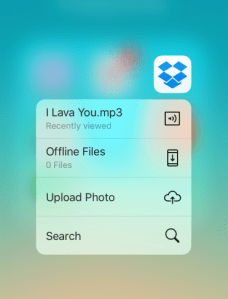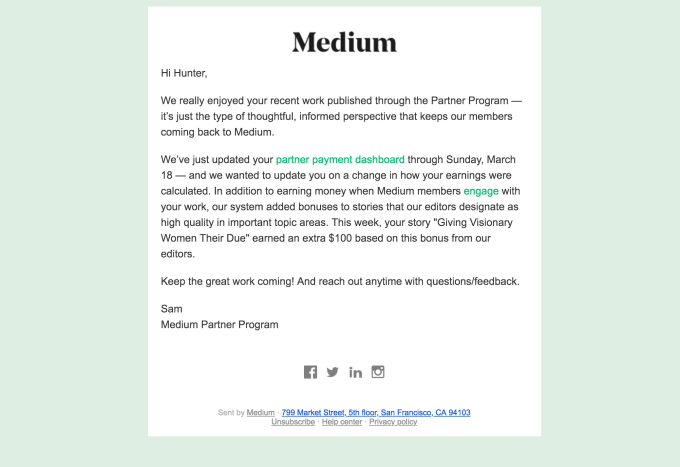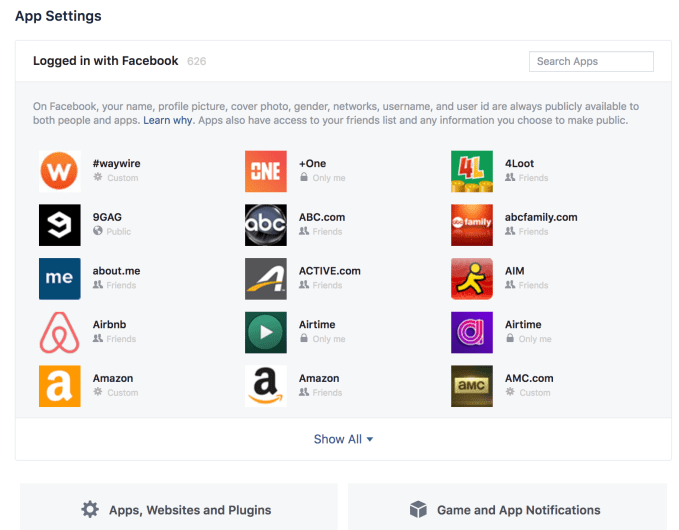It’s moved beyond tradition and into the realm of meme that Apple manages to dominate the news cycle around major industry events all while not actually participating in said events. CES rolls around and every story is about HomeKit or its competitors, another tech giant has a conference and the news is that Apple updated some random subsystem of its ever-larger ecosystem of devices and software .
This is, undoubtedly planned by Apple in many instances. And why not? Why shouldn’t it own the cycle when it can, it’s only strategically sound.
This week, the 2018 Game Developer’s Conference is going on and there’s a bunch of news coverage about various aspects of the show. There are all of the pre-written embargo bits about big titles and high-profile indies, there are the trend pieces and, of course, there’s the traditional ennui-laden ‘who is this event even for’ post that accompanies any industry event that achieves critical mass.
But the absolute biggest story of the event wasn’t even at the event. It was the launch of Fortnite and, shortly thereafter, PlayerUnknown’s Battlegrounds on mobile devices. Specifically, both were launched on iOS and PUBG hit Android simultaneously.
The launch of Fortnite, especially, resonates across the larger gaming spectrum in several unique ways. It’s the full and complete game as present on consoles, it’s iOS-first and it supports cross-platform play with console and PC players.
This has, essentially, never happened before. There have been stabs at one or more of those conditions on experimental levels but it really marks a watershed in the games industry that could serve to change the psychology around the platform discussion in major ways. 
For one, though the shape of GDC has changed over the years as it relates to mobile gaming – it’s only recently that the conference has become dominated by indie titles that are mobile centric. The big players and triple-A console titles still take up a lot of air, but the long tail is very long and mobile is not synonymous with “casual gamers” as it once was.
“I remember the GDC before we launched Monument Valley,” says Dan Gray of Monument Valley 2 studio ustwo. “We were fortunate enough that Unity offered us a place on their stand. Nobody had heard of us or our game and we were begging journalists to come say hello, it’s crazy how things have changed in four years. We’ve now got three speakers at the conference this year, people stop you in the street (within a two block radius) and we’re asked to be part of interviews like this about the future of mobile.”
Zach Gage, the creator of SpellTower, and my wife’s favorite game of all time, Flip Flip Solitaire, says that things feel like they have calmed down a bit. “It seems like that might be boring, but actually I think it’s quite exciting, because a consequence of it is that playing games has become just a normal thing that everyone does… which frankly, is wild. Games have never had the cultural reach that they do now, and it’s largely because of the App Store and these magical devices that are in everyones pockets.”
Alto’s Odyssey is the followup to Snowman’s 2015 endless boarder Alto’s Adventure. If you look at these two titles, three years apart, you can see the encapsulation of the growth and maturity of gaming on iOS. The original game was fun, but the newer title is beyond fun and into a realm where you can see the form being elevated into art. And it’s happening blazingly fast.
“There’s a real and continually growing sense that mobile is a platform to launch compelling, artful experiences,” says Snowman’s Ryan Cash. “This has always been the sentiment among the really amazing community of developers we’ve been lucky enough to meet. What’s most exciting to me, now, though, is hearing this acknowledged by representatives of major console platforms. Having conversations with people about their favorite games from the past year, and seeing that many of them are titles tailor-made for mobile platforms, is really gratifying. I definitely don’t want to paint the picture that mobile gaming has ever been some sort of pariah, but there’s a definite sense that more people are realizing how unique an experience it is to play games on these deeply personal devices.”
Mobile gaming as a whole has fought since the beginning against the depiction that it was for wasting time only, not making ‘true art’, which was reserved for consoles or dedicated gaming platforms. Aside from the ‘casual’ vs. ‘hardcore’ debate, which is more about mechanics, there was a general stigma that mobile gaming was a sidecar bet to the main functions of these devices, and that their depth would always reflect that. But the narratives and themes being tackled on the platform beyond just clever mechanics are really incredible.
Playing Monument Valley 2 together with my daughter really just blew my doors off, and I think it changed a lot of people’s minds in this regard. The interplay between the characters and environment and a surprisingly emotional undercurrent for a puzzle game made it a breakout that was also a breakthrough of sorts.
“There’s so many things about games that are so awesome that the average person on the street doesn’t even know about,” says Gray. “As small developers right now we have the chance to make somebody feel a range of emotions about a video game for the first time, it’s not often you’re in the right place at the right time for this and to do it with the most personal device that sits in your pocket is the perfect opportunity.”
The fact that so many of the highest profile titles are launching on iOS first is a constant source of consternation for Android users, but it’s largely a function of addressable audience.
I spoke to Apple VP Greg Joswiak about Apple’s place in the industry. “Gaming has always been one of the most popular categories on the App Store,” he says. A recent relaunch of the App Store put gaming into its own section and introduced a Today tab that tells stories about the games and about their developers.
That redesign, he says, has been effective. “Traffic to the App Store is up significantly, and with higher traffic, of course, comes higher sales.”
“One thing I think smaller developers appreciate from this is the ability to show the people behind the games,” says ustwo’s Gray about the new gaming and Today sections in the App Store. “Previously customers would just see an icon and assume a corporation of 200 made the game, but now it’s great we can show this really is a labour of love for a small group of people who’re trying to make something special. Hopefully this leads to players seeing the value in paying up front for games in the future once they can see the craft that goes into something.”
Snowman’s Cash agrees. “It’s often hard to communicate the why behind the games you’re making — not just what your game is and does, but how much went into making it, and what it could mean to your players. The stories that now sit on the Today tab are a really exciting way to do this; as an example, when Alto’s Odyssey released for pre-order, we saw a really positive player response to the discussion of the game’s development. I think the variety that the new App Store encourages as well, through rotational stories and regularly refreshed sections, infuses a sense of variety that’s great for both players and developers. There’s a real sense I’m hearing that this setup is equipped to help apps and games surface, and stayed surfaced, in a longer term and more sustainable way.”
In addition, there are some technical advantages that keep Apple ahead of Android in this arena. Plenty of Android devices are very performant and capable in individual ways, but Apple has a deep holistic grasp of its hardware that allow it to push platform advantages in introducing new frameworks like ARKit. Google’s efforts in the area with AR Core are just getting started with the first batch of 1.0 apps coming online now, but Google will always be hamstrung by the platform fragmentation that forces developers to target a huge array of possible software and hardware limitations that their apps and games will run up against.
This makes shipping technically ambitious projects like Fortnite on Android as well as iOS a daunting task. “There’s a very wide range of Android devices that we want to support,” Epic Games’ Nick Chester told Forbes. “We want to make sure Android players have a great experience, so we’re taking more time to get it right.“
That wide range of devices includes an insane differential in GPU capability, processing power, Android version and update status.
“We bring a very homogenous customer base to developers where 90% of [devices] are on the current versions of iOS,” says Joswiak. Apple’s customers embrace those changes and updates quickly, he says, and this allows developers to target new features and the full capabilities of the devices more quickly.
Ryan Cash sees these launches on iOS of ‘full games’ as they exist elsewhere as a touchstone of sorts that could legitimize the idea of mobile as a parity platform.
“We have a few die-hard Fortnite players on the team, and the mobile version has them extremely excited,” says Cash. “I think more than the completeness of these games (which is in of itself a technical feat worth celebrating!), things like Epic’s dedication to cross-platform play are massive. Creating these linked ecosystems where players who prefer gaming on their iPhones can enjoy huge cultural touchstone titles like Fortnite alongside console players is massive. That brings us one step closer to an industry attitude which focuses more on accessibility, and less on siloing off experiences and separating them into tiers of perceived quality.”
“I think what is happening is people are starting to recognize that ios devices are everywhere, and they are the primary computers of many people,” says Zach Gage. “When people watch a game on Twitch, they take their iPhone out of their pocket and download it. Not because they want to know if there’s a mobile version, but because they just want the game. It’s natural to assume that these games available for a computer or a playstation, and it’s now natural to assume that it would be available for your phone.”
Ustwo’s Gray says that it’s great that the big games are transitioning, but also cautions that there needs to be a sustainable environment for mid-priced games on iOS that specifically use the new capabilities of these devices.
“It’s great that such huge games are transitioning this way, but for me I’d really like to see more $30+ titles designed and developed specifically for iPhone and iPad as new IP, really taking advantage of of how these devices are used,” he says. “It’s definitely going to benefit the AppStore as a whole, but It does need to be acknowledged however that the way players interact with console/PC platforms and mobile are inherently different and should be designed accordingly. Session lengths and the interaction vocabulary of players are two of the main things to consider, but if a game manages to somehow satisfy the benefits of all those platforms then great, but I think it’s hard.”
Apple may not be an official sponsor of GDC, but it is hosting two sessions at the show including an introduction to Metal 2, its rendering pipeline, and ARKit, its hope for the future of gaming on mobile. This presence is exciting for a number of reasons, as it shows a greater willingness by Apple to engage the community that has grown around its platforms, but also that the industry is becoming truly integrated, with mobile taking its rightful place alongside console and portable gaming as a viable target for the industry’s most capable and interesting talent.
“They’re bringing the current generation of console games to iOS,” Joswiak says, of launches like Fortnite and PUBG and notes that he believes we’re at a tipping point when it comes to mobile gaming, because mobile platforms like the iPhone and iOS offer completely unique combinations of hardware and software features that are iterated on quickly.
“Every year we are able to amp up the tech that we bring to developers,” he says, comparing it to the 4-5 year cycle in console gaming hardware. “Before the industry knew it, we were blowing people away [with the tech]. The full gameplay of these titles has woken a lot of people up.”

Source: Tech Crunch
 It seemed that such a tool would translate nicely to business, but Alan Pelz-Sharpe, founder and principal analyst at Deep Analysis, who has been following this space for years, says Dropbox has always primarily been confined to teams on the business side. “Dropbox is primarily a consumer company with 500 million users, [with] only about 300,000 teams using their business offering,” he told TechCrunch.
It seemed that such a tool would translate nicely to business, but Alan Pelz-Sharpe, founder and principal analyst at Deep Analysis, who has been following this space for years, says Dropbox has always primarily been confined to teams on the business side. “Dropbox is primarily a consumer company with 500 million users, [with] only about 300,000 teams using their business offering,” he told TechCrunch.


 (@anshublog)
(@anshublog) 



